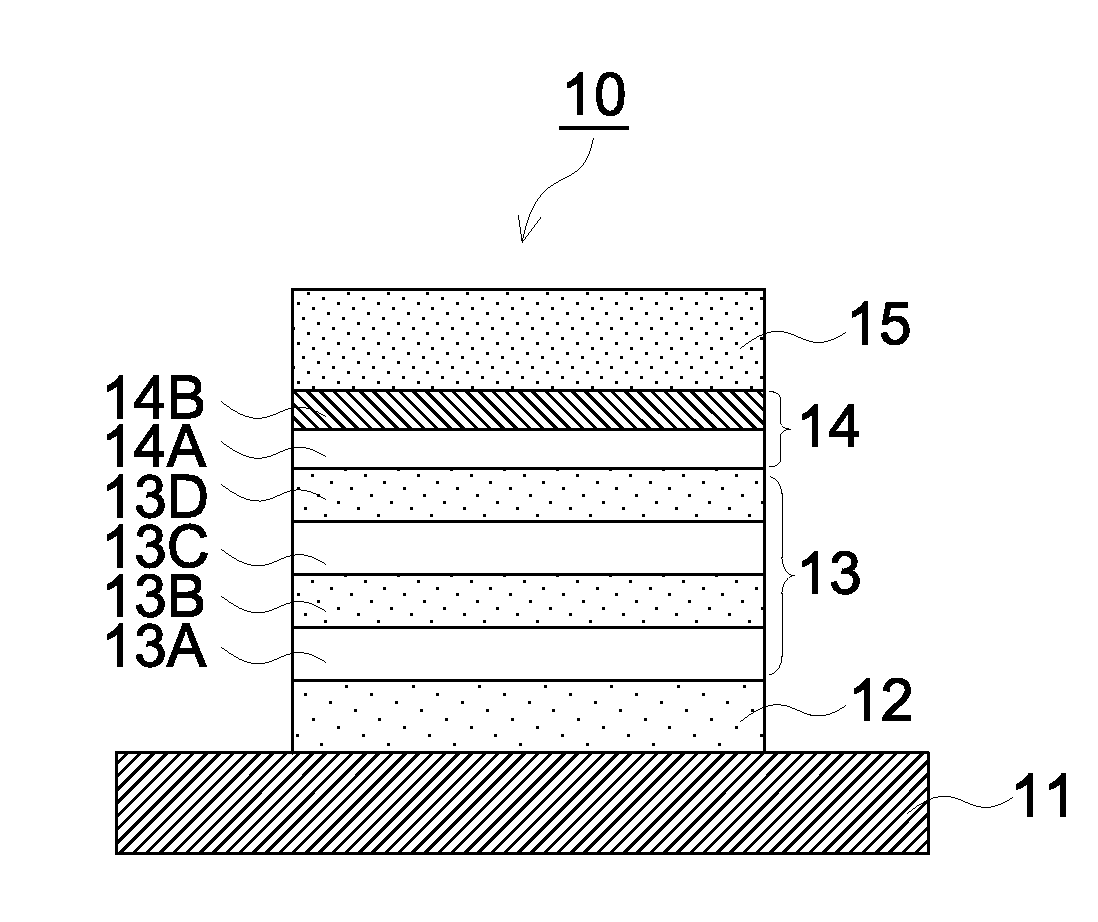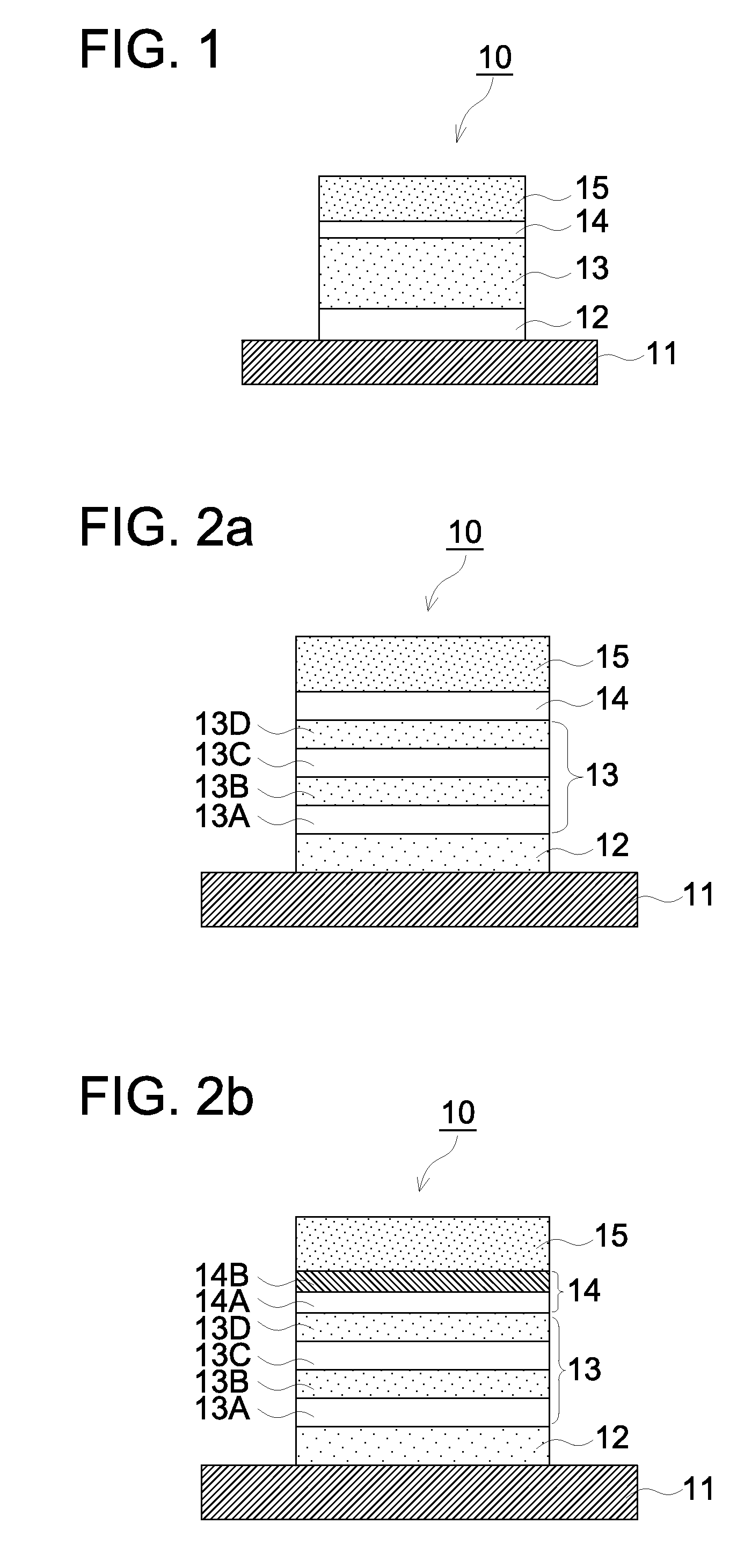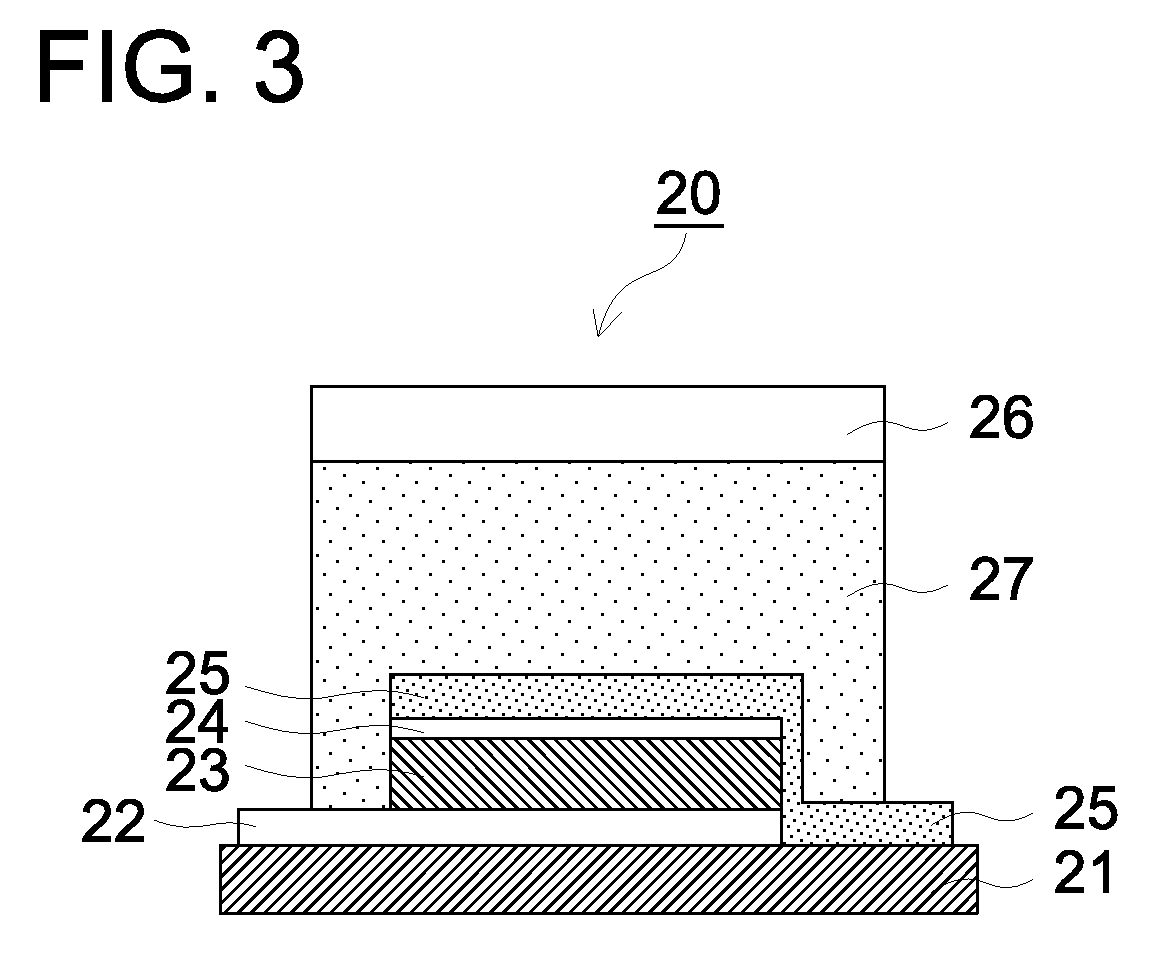Organic electroluminescent member and method for producing organic electroluminescent element
a technology of organic electroluminescence and organic electroluminescence, which is applied in the direction of thermoelectric devices, solid-state devices, and semiconductor/solid-state device details, etc., can solve the problems of deterioration of efficiency and lifetime, deterioration of performance, and difficulty in handling, and achieve excellent thermal stability, low voltage, and high luminance
- Summary
- Abstract
- Description
- Claims
- Application Information
AI Technical Summary
Benefits of technology
Problems solved by technology
Method used
Image
Examples
example 1
Preparation of Organic EL Member
[Preparation of Organic EL Member 101]
(Preparation of Anode)
[0104]An anode was prepared by making patterning to a glass substrate (NA45 produced by NH Techno Glass Corp.) on which a 100 nm film of ITO (indium tin oxide) was formed. Thereafter, the above transparent support substrate provided with the ITO transparent electrode was subjected to ultrasonic washing with isopropyl alcohol, followed by drying with desiccated nitrogen gas, and was subjected to UV ozone washing for 5 minutes.
(Preparation of Hole Transport Layer)
[0105]On the transparent support substrate thus prepared was applied a 50% solution of poly(3,4-ethylenedioxythiphene)-polystyrene sulfonate (abbreviation: PEDOT / PSS, Baytron P AI 4083 made by Bayer AG.) diluted with water by using a spin coating method at 3,000 rpm for 30 seconds to form a film, and then, it was kept at 150° C. for 30 minutes. A hole transport layer having a thickness of 60 nm was thus prepared.
(Preparation of Light E...
example 2
Preparation of Organic EL Member
[Preparation of Organic EL Member 201]
[0124]Organic EL member 201 was prepared in the same manner as preparation of Organic EL member 107 described in Example 1, except performing the following change after formation of a light emitting layer. Alq3 (glass transition temperature, 128 C°), potassium fluoride, and sodium fluoride each were placed in a tantalum resistance heating boat, and aluminium was placed in a tungsten resistance heating boat. They were fitted in a vacuum deposition apparatus. The substrate having been prepared until the light emitting layer was transferred in the vacuum deposition apparatus without exposing to the air. Subsequently, after reducing the pressure of the vacuum tank to 5×10−5 Pa, the heating boat containing Alq3 was heated via application of electric current at a vapor deposition rate of 0.15 nm / second to produce a layer having a thickness of 40 nm. Thus an electron transport layer was prepared. Then, the heating boat c...
example 3
Preparation of Organic EL Member
[Preparation of Organic EL Member 301]
[0128]Organic EL member 301 was prepared in the same manner as preparation of Organic EL member 201 described in Example 2, except that the sample was heated at 100° C. for 30 minutes after formation of a cathode.
[Preparation of Organic EL Member 302]
[0129]Organic EL member 302 was prepared in the same manner as preparation of Organic EL member 201 described in Example 2, except that the following change was made. The sample was transferred under a nitrogen gas atmosphere after formation of a second electron injection layer, and it was heated at 100° C. for 30 minutes. Then, it was restored in the vacuum deposition apparatus and aluminium was vapor deposited to have a thickness of 100 nm to form a cathode.
>
[0130]The prepared Organic EL members 301 and 302 described above were transferred in a nitrogen gas (grade: G1) atmosphere in the same manner as described in Example 1. After leaving them at 40° C. for 12 hours...
PUM
 Login to View More
Login to View More Abstract
Description
Claims
Application Information
 Login to View More
Login to View More - R&D
- Intellectual Property
- Life Sciences
- Materials
- Tech Scout
- Unparalleled Data Quality
- Higher Quality Content
- 60% Fewer Hallucinations
Browse by: Latest US Patents, China's latest patents, Technical Efficacy Thesaurus, Application Domain, Technology Topic, Popular Technical Reports.
© 2025 PatSnap. All rights reserved.Legal|Privacy policy|Modern Slavery Act Transparency Statement|Sitemap|About US| Contact US: help@patsnap.com



